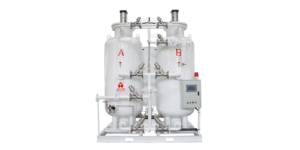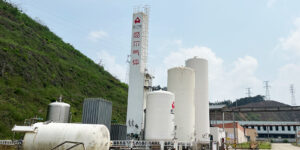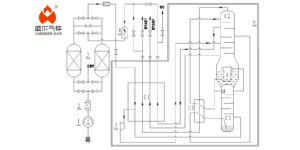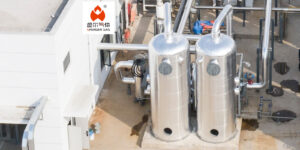The use of nitrogen gas is becoming increasingly widespread in industries and laboratories. Initially, nitrogen gas was primarily obtained through the method of liquefaction of air. However, with technological advancements, Pressure Swing Adsorption (PSA) nitrogen generators have become another popular method for nitrogen production. In this article, we will unveil the components, the principle of pressure swing adsorption, and the selection of molecular sieves used in PSA nitrogen generators.

Components of PSA Nitrogen Generator
The main components of a PSA nitrogen generator include an air compression system, compressed air purification system, pressure swing adsorption towers, nitrogen storage system, and control system.
- Air Compression System: Atmospheric air is compressed using an air compressor to provide the raw material required for the nitrogen generator.
- Compressed Air Purification System: Compressed air contains moisture, oil, and small impurities, which need to be treated using equipment such as a refrigerated air dryer and an oil-water separator in the pretreatment system to ensure dry and clean source air.
- Pressure Swing Adsorption Towers: These are the core components of PSA nitrogen generators and typically consist of two adsorption towers filled with molecular sieves. Through the processes of adsorption and desorption, nitrogen and oxygen are separated, resulting in high-purity nitrogen gas.
- Nitrogen Storage System: The produced nitrogen gas is stored in storage tanks, ready for use.
- Control System: Monitors and manages the operational status of the entire equipment to ensure safe and stable operation.
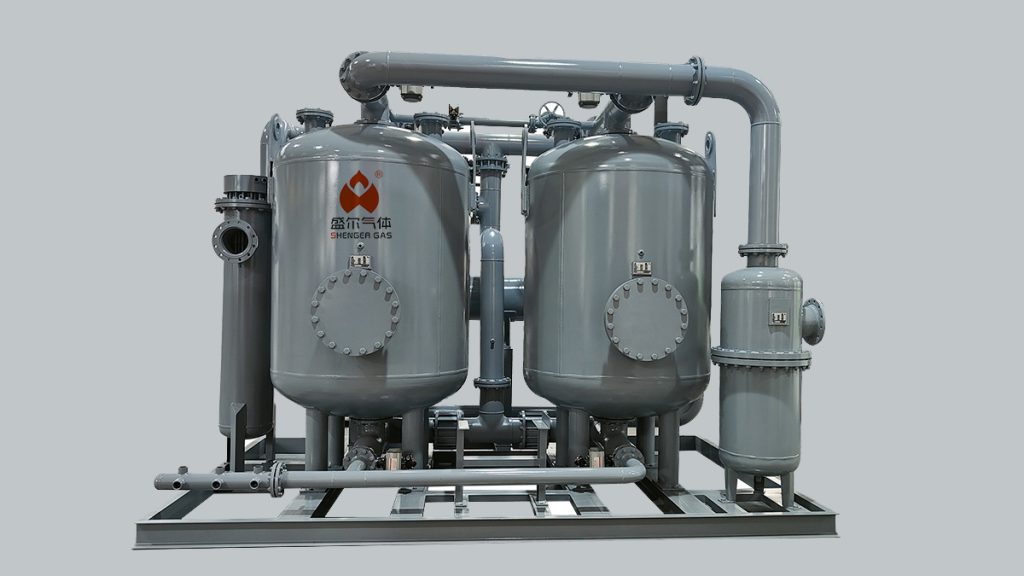
Principle of Pressure Swing Adsorption
PSA, which stands for Pressure Swing Adsorption, is based on the differential adsorption capacity of different gas molecules by molecular sieves. It achieves gas separation by changing the pressure.
As the pressure increases, the adsorption capacity of molecular sieves for gas molecules increases. At this stage, most of the oxygen molecules are adsorbed onto the molecular sieves, while nitrogen gas is not adsorbed and flows out from the top of the tower. When the pressure is reduced, the molecular sieves release the adsorbed oxygen, entering the desorption phase.
Selection of Molecular Sieves
The choice of molecular sieves plays a crucial role in PSA nitrogen generators. It directly impacts nitrogen production efficiency and gas purity. Commonly used molecular sieves include carbon molecular sieves and zeolite molecular sieves.
- Carbon Molecular Sieves: These are primarily produced from specific organic materials using a specific process. They have small adsorption pore sizes and are particularly suitable for nitrogen-oxygen separation. Carbon molecular sieves are known for their fast adsorption rates, making them suitable for rapid cycling PSA nitrogen generators.
- Zeolite Molecular Sieves: Zeolite molecular sieves are natural or synthetic porous aluminosilicate materials widely used in adsorption and catalysis. However, their adsorption rates are relatively slower, so they are less commonly used in PSA nitrogen generators.
Choosing the right molecular sieve not only improves nitrogen production efficiency but also extends the equipment’s lifespan.
PSA nitrogen generators efficiently separate nitrogen gas from air using the principle of pressure swing adsorption in conjunction with specific molecular sieve materials. Compared to traditional liquefaction of air methods, PSA nitrogen generators offer advantages such as simplicity of design, ease of operation, and low energy consumption. Understanding their working principles and components not only helps in selecting and using the equipment effectively but also provides insights into the field of gas separation technology.



